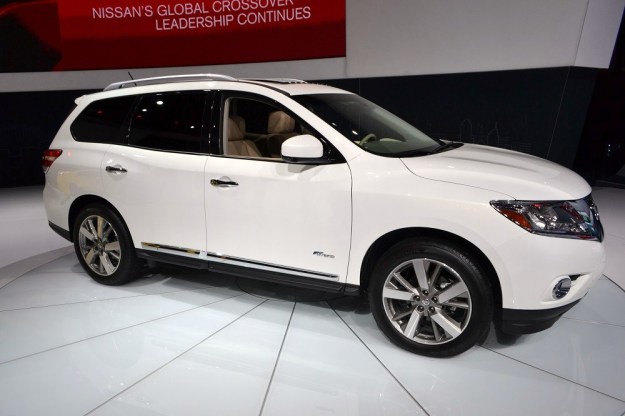 The debut of the 2014 Nissan Pathfinder Hybrid at the New York International Auto Show is the latest in a growing number of historically more “rugged” vehicle nameplates venturing into the technology.
The debut of the 2014 Nissan Pathfinder Hybrid at the New York International Auto Show is the latest in a growing number of historically more “rugged” vehicle nameplates venturing into the technology.
The new Pathfinder Hybrid replaces the standard 3.5-liter V6 with a new supercharged 2.5-liter gasoline engine and an electric motor paired with a compact Lithium-ion (Li-on) battery. The 15 kW electric motor and gas engine featured in the Pathfinder works in tandem to produce a net horsepower of 250 and 243 lb-ft. of torque.
However, what’s most impressive is that the hybrid version of the iconic Pathfinder, a vehicle most would probably have never associated with the “green” movement years ago, only loses 10 horsepower and 7 lb-ft. of torque versus the 3.5-liter V6 − one of the latest examples of the advancements being made in the technology.
Towing capacity for the Pathfinder Hybrid is listed at 3,500-pounds.
The hybrid system operates by using a dual clutch system that manages power from both the electric motor and the gas engine. Positioned between the gasoline engine and the CVT where the torque converter would normally be, the motor also functions as a generator, conveying deceleration force from the CVT to the battery.

With the Pathfinder Hybrid’s large 19.5-gallon fuel tank, Nissan estimates the driving range at more than 526 miles. A regenerative braking system automatically recharges the battery by converting the vehicle’s kinetic energy that would be otherwise lost in braking.
Even though Nissan has been focused on broadening the appeal of the Pathfinder for some time, it still seems odd talking about the technology in a historically off-road vehicle like the Pathfinder in the same context as a Toyota Prius.
The Pathfinder, however, isn’t the only nameplate with a more “rugged” brand history delving into hybrid territory.
Ford is reportedly exploring a hybrid version of the award-winning F-150 and Range Rover has a hybrid model of its signature SUV in the works as well, which is just another indication that the idea of “going green” holds a lot more weight than it did just a few years ago.


